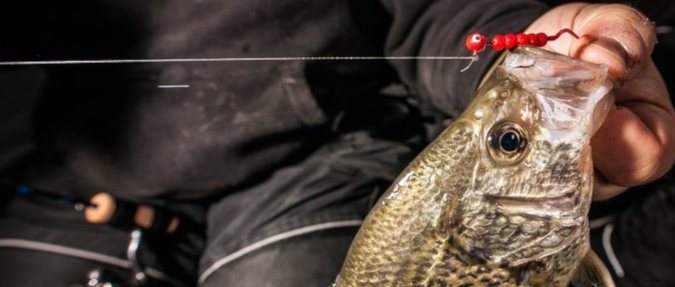
Henry Loew asks:
Hey Joel! How have you been? I recently found out that you weren’t on IDO anymore and I was wondering where you went… well I found your page and its awesome! I really enjoy reading all of the stuff you got on there and I really admire how much you love the woods and the lakes. I created my own kind of fishing team called gotta love it outdoors we really enjoy fishing and hunting anyways I was wondering where are the larger crappies at this time of the year? Are they moving in shallow? What do they like to bite on? Also the bigger gills too. I know you are a huge pan fish guy so I thought to were the best guy to ask.
Thanks for the kind words Henry, and you’re right, I love fishing for panfish year round. It’s funny, late-ice has come to mean a number of different things depending on where in the ice-belt you live. I just got back from a photo shoot where we were looking for gills and crappies all over northern Minnesota, and found them very much still in their mid-winter patterns. That should come as no surprise with subzero temps, plenty of snow/ice, and the fact that the calendar was just creeping into March.
True late-ice conditions to me means a pattern of melt during the day, with below freezing temps at night, over the course of a few weeks. As ice separates from shore, some of the best angling is still to be had provided you can find a way onto the ice sheet. It’s some of the best fishing of the year, but also some of the most dangerous. Wear a floating suit like a Striker and always be mindful of your exit plan at the end of the day.
Late ice is great for a few reasons. Movement of water washes in nutrients and even early terrestrials, while increased sun angle and light penetration breathes life to the shallows. For a true late-ice pattern I’m looking in less than 15FOW, primarily around the best standing weed growth in the lake. Cabbage and coontail both are great weeds to focus on, and one of the best big crappie patterns I’ve ever been on is a sight-fishing gig that happens over these expansive weed flats.
Start with a clear lake that holds quality crappies, then focus on the closest flat to traditional mid-winter holes. Knowledge of where crappies are mid-winter only shortens your search. Drill holes in as shallow as 5 FOW across the flat, all the way up to 15 FOW and fish terrestrial patterns. VMC Tungsten Flies and VMC Wingding, Nymph, and Wax Tail Jigs are what I use for this bite, especially in the largest sizes, as they are “buggy” yet offer plenty of lifelike action.
It’s a slow process and takes a healthy dose of patience, timing, and stealth. Setup in an Otter hub-style shelter and use it as a dark-house to get a leg-up on those crappies, and don’t lean over the hole. Rather stand back and let your line drape across the front of the hole and down. Position yourself on a chair or focus on being as still as possible while looking at only a sliver of underwater real estate. Any quick movement, and fish will be gone. Jig aggressively to draw in crappies from far away, and work the fish visually from there.
It’s not a numbers game, but is a pattern I’ve successfully repeated in many clear trophy crappie waters for the biggest fish in the lake. Remember to release those tanks, as brute crappies are as rare as big gills these days!
Good luck,
Joel
